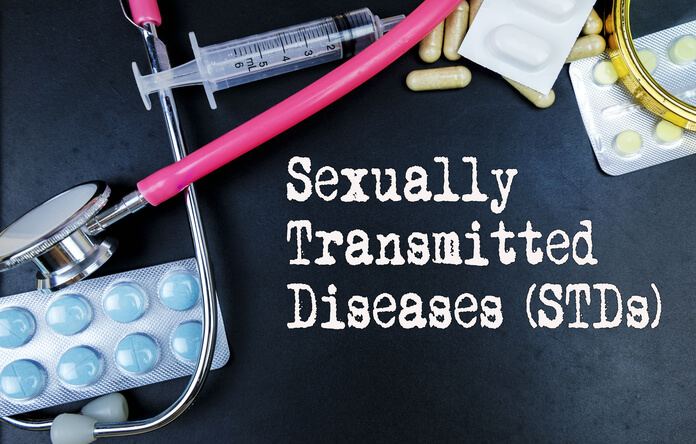Was sind sexuell übertragbare Infektionen?
Sexuell übertragbare Infektionen (STIs) sind Krankheiten, die sich durch sexuellen Kontakt ausbreiten. Etwa die Hälfte der 100 neu identifizierten STIs werden bei Jugendlichen und Jugendlichen unter 24 Jahren berichtet. STIs können sehr gefährlich sein und die Gesundheit junger Menschen belasten. Leider können schwerwiegende Folgen die reproduktive Gesundheit betreffen, d. H. Eileiterunfruchtbarkeit, problematische Schwangerschaften usw. bei Frauen und AIDS bei Männern. Verhaltensfaktoren, die STIs verursachen, sind unsicheres Sexualverhalten, Gesundheitsverhalten und Drogenmissbrauch. Psychologische Faktoren wie das Selbstwertgefühl beeinflussen auch die STI-Diagnose und -Behandlung bei den Jugendlichen.

Häufige Arten von STIs
Einige der häufigsten Arten von STIs, die Sie beachten sollten, sind die folgenden:
- HIV: Human Immunodeficiency Virus, or AIDS-causing agent, destroys the body’s immunity on having unprotected sex with an infected person, or using contaminated needles, or blood transfusion.
- HPV: Human Papilloma Virus is a common STI and seen as genital warts. HPV infection increases risk of cervical cancer in women. Pap tests can detect an HPV infection.
- Chlamydia: Chlamydial infections are characterized by abnormal genital or rectal discharge, burning sensation during urination, and rectal bleeding. In women, it can cause low belly ache and may lead to another disorder called pelvic inflammatory disease (PID). In men, we find urinary problems.
- Gonorrhoea: It causes painful urination or bowel movements, and may even lead to PID, ectopic pregnancy, and infertility in women.
- PID: This STI occurs in reproductive organs due to chlamydia or gonorrhoea. It causes infection of reproductive organs, thus leading to female infertility.
- Genital herpes: This STI is caused by herpes simplex virus (HSV) and manifests itself as a burning sensation which develops into painful sores in the vaginal or rectal area. Treatment is possible but relapses are common.
- Syphilis: Syphilis is a painless open sore or a rash around sexual organs in men and women. Untreated syphilis may lead to heart and nervous system disorders over time.
Andere STIs umfassen bakterielle Vaginose, Chancroid, Cytomegalievirus-Infektionen, Donovanose), Filzläuse, Trichomoniasis, Krätze usw.
Schutz vor stIs
Es gibt mehrere Sicherheitsmaßnahmen, die man befolgen sollte, um sicherzustellen, dass sie vor STIs geschützt sind:
- Stay mutually monogamous with an uninfected partner
- Use a male latex or female polyurethane condom, even for oral sex.
- Reduce chances of getting HIV infections with preventive steps:
- PEP (post-exposure prophylaxis). Take HIV preventive medication within 72 hours of sexual contact.
- PrEP (pre-exposure prophylaxis). Follow strict medication regularly to prevent any HIV infection from sexual contact in future.
- Have regular medical examination for HIV and STIs.
- Avoid sexual contact with somebody who is HIV-positive, and make sure that the other person is taking their HIV medicines.
- Be aware of the symptoms of STIs and seek immediate medical help if any symptoms occur.
- Avoid douche as it reduces the pH of vaginal area making you more prone to infection.
Das Screening auf STIs ist bei sexuell aktiven Jugendlichen sehr wichtig. Viele der STIs können erfolgreich mit Antibiotika geheilt werden. Einige STIs, wie Herpes, können nicht vollständig geheilt werden und können wieder auftreten, was vermeidbar ist. Ihre Gesundheit im Auge zu behalten und sich der Symptome bewusst zu sein, kann eine große Hilfe bei der Behandlung sein.


